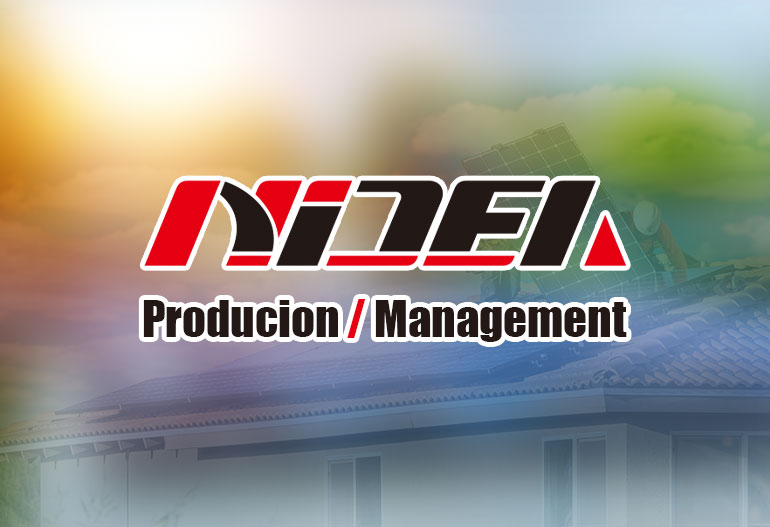Reliability Improvement Solutions for DC Power Supply Systems in Communication Base Stations
Voltage Fluctuations: Over-voltage (exceeding 253V in 220V grids) and under-voltage (below 187V) events, common in areas with aging infrastructure, can damage rectifiers and cause unexpected shutdowns.
Frequency Variations: Deviations from standard 50/60Hz frequencies disrupt rectifier operation, leading to output voltage ripples that affect sensitive radio equipment.
Prolonged Outages: Grid failures require seamless transition to backup batteries, but inadequate battery capacity or poor switching mechanisms often result in service interruptions.
Temperature Extremes: High temperatures (above 40°C) reduce battery capacity by up to 30% and accelerate capacitor degradation in rectifiers. Low temperatures (below -20°C) increase battery internal resistance, limiting discharge current.
Humidity and Corrosion: Moisture ingress (common in coastal or tropical regions) causes corrosion of busbars and connectors, increasing resistance and heat generation.
Dust and Contamination: Particulate matter accumulates on heat sinks, reducing cooling efficiency and increasing the risk of thermal shutdowns.
Rectifier Failures: Semiconductor devices (e.g., MOSFETs, diodes) degrade over time due to thermal cycling, leading to efficiency drops and eventual failure.
Battery Aging: Lead-acid batteries (still widely used) suffer from sulfation and plate corrosion, reducing capacity by 20–30% after 3–5 years. Lithium-ion batteries, while longer-lasting, face challenges with thermal runaway if not properly managed.
Connector Wear: Vibration from equipment or environmental factors loosens connections, causing arcing and voltage drops.
N+1 Redundancy: Deploying one more rectifier than the minimum required (e.g., 4 rectifiers for a 3-rectifier load) ensures that failures do not disrupt output. This configuration is standard for urban base stations with high reliability requirements.
Modular Hot-Swappable Design: Using hot-swappable rectifiers allows replacement without power interruption. Modern modules (e.g., 100A units) feature self-diagnostic capabilities, automatically isolating faulty units to prevent system-wide issues.
Load Sharing Technology: Advanced rectifiers use digital current-sharing loops to distribute load evenly (±2% imbalance), preventing overheating of individual units. This extends rectifier lifespan by 30–40% compared to unbalanced systems.
Lithium-Ion Battery Adoption: LiFePO4 batteries offer higher energy density (150–200 Wh/kg vs. 30–50 Wh/kg for lead-acid), longer cycle life (2000+ cycles vs. 500–800), and better performance at extreme temperatures. They also require 50% less space, a key advantage for small-cell stations.
Battery Bank Redundancy: Splitting batteries into two independent banks (each sized for 100% load) allows one bank to be maintained or replaced while the other remains operational. This eliminates the "single point of failure" in traditional single-bank designs.
Temperature-Controlled Enclosures: Installing batteries in climate-controlled cabinets (maintaining 20–25°C) can extend lead-acid battery life by 2–3 years and lithium-ion life by 5+ years. Heat pumps or thermoelectric coolers are used in off-grid stations where grid power for AC is unavailable.
Dual Busbar Design: Separating critical loads (e.g., transceivers) and non-critical loads (e.g., lighting) onto independent busbars ensures that a fault in one does not affect the other. Busbars should be made of tinned copper to resist corrosion.
Intelligent Circuit Breakers: Digital breakers with remote monitoring capabilities replace traditional thermal breakers. They trip faster (within 10 ms) during overloads and provide data on current levels, helping predict future issues.
Surge Protection Devices (SPDs): Installing SPDs at AC input, rectifier output, and battery connections mitigates damage from lightning strikes (common in rural areas) and transient voltage spikes. SPDs should be rated for 20 kA+ surge current and include visual status indicators for easy inspection.
Sensor Integration: Deploying sensors for voltage, current, temperature, humidity, and battery state-of-charge (SoC) provides a holistic view of system health. Wireless sensors (using LoRaWAN or NB-IoT) eliminate wiring challenges in remote stations.
Centralized Management Software: Platforms like Huawei NetEco or ZTE EnergyMaster aggregate data from multiple stations, generating alerts for anomalies (e.g., rectifier efficiency drop, battery voltage below threshold). Dashboards display key metrics such as MTBF, downtime risk, and maintenance schedules.
Edge Computing for Low-Latency Alerts: In off-grid stations with limited connectivity, edge devices analyze data locally, triggering immediate actions (e.g., activating backup generators) without waiting for cloud processing.
Battery Health Forecasting: Machine learning models analyze battery charge/discharge cycles, temperature, and internal resistance to predict end-of-life (EOL) 6–12 months in advance. This allows scheduled replacement during low-traffic periods.
Rectifier Degradation Detection: AI algorithms monitor rectifier efficiency trends, identifying degradation (e.g., a 5% drop over 3 months) that precedes failure. This reduces unplanned rectifier replacements by 50%.
Failure Pattern Recognition: By correlating historical failure data with environmental conditions (e.g., humidity spikes, grid instability), systems can predict high-risk periods (e.g., monsoon seasons) and recommend preemptive measures.
Adaptive Load Shedding: During prolonged outages, the system prioritizes critical loads (e.g., 5G core equipment) by shedding non-essential ones (e.g., auxiliary lighting), extending backup time by 30–40%.
Intelligent Charging: Battery chargers adjust voltage and current based on temperature (e.g., reducing charge current by 50% at temperatures above 35°C) to prevent overheating and sulfation.
Grid-Battery Transition Optimization: Ensuring seamless 切换 between grid and battery power (within 5 ms) using solid-state transfer switches prevents voltage dips that can reboot sensitive radio equipment.
Passive Cooling for Hot Climates: Using heat pipes and phase-change materials (PCMs) in rectifier enclosures reduces reliance on fans, which are prone to failure. PCMs absorb heat during the day and release it at night, maintaining internal temperatures below 45°C.
Heating Systems for Cold Regions: Installing PTC heaters (self-limiting to prevent overheating) in battery cabinets ensures temperatures stay above 0°C, maintaining battery capacity. Heaters are activated when temperatures drop below 5°C, powered by the battery itself if grid power is unavailable.
IP65-Rated Enclosures: Sealing rectifiers and battery banks in IP65 enclosures prevents dust ingress and water jets, critical for desert or coastal stations. Pressure equalization valves avoid condensation by balancing internal and external air pressure.
Dehumidifiers: In high-humidity areas (relative humidity >80%), thermoelectric dehumidifiers maintain humidity below 60%, reducing corrosion risk. These devices consume minimal power (5–10W) and can be powered by the base station’s backup system.
Shock-Mounted Components: Securing rectifiers, batteries, and connectors with anti-vibration mounts (e.g., rubber bushings) prevents loosening in areas prone to earthquakes or heavy vehicle traffic.
Tamper-Proof Enclosures: Using lockable, steel-reinforced cabinets deters theft (a significant issue in remote areas) and protects components from vandalism. IoT-enabled locks send alerts for unauthorized access attempts.
Quarterly Inspections: Checking for loose connections, corrosion, and dust accumulation; tightening connectors to torque specifications (typically 15–20 Nm for copper lugs) to prevent arcing.
Semi-Annual Battery Testing: Conducting capacity discharge tests (to 80% depth of discharge) for lead-acid batteries and impedance testing for lithium-ion batteries to identify weak cells.
Annual Rectifier Calibration: Verifying output voltage (±0.5% of -48V) and current sharing accuracy, recalibrating sensors to ensure measurement precision.
Technician Certification: Ensuring maintenance staff are trained in handling lithium-ion batteries (to prevent thermal runaway) and using specialized tools (e.g., thermal imagers to detect hotspots).
Digital Maintenance Logs: Replacing paper logs with cloud-based systems that track component history, test results, and repairs. This facilitates trend analysis and ensures compliance with industry standards (e.g., ITU-T L.1200).
Strategic Spare Stocking: Maintaining critical spares (rectifier modules, fuses, battery cells) at regional warehouses, ensuring delivery within 24 hours for urban stations and 48 hours for remote ones.
Obsolescence Planning: Proactively replacing components (e.g., legacy rectifiers) before they are discontinued, avoiding situations where failures cannot be repaired due to unavailable parts.
Challenges: Extreme cold (-30°C), frequent grid outages, and limited maintenance access.
Solutions:
Deployed LiFePO4 batteries in heated enclosures with PTC heaters.
Implemented N+2 rectifier redundancy and passive cooling via heat pipes.
Added a solar array with MPPT controllers to extend battery backup during prolonged outages.
Results: Downtime reduced from 12 hours/month to <1 hour/month; battery lifespan extended from 3 to 7 years.
Challenges: High humidity (90%+), grid voltage fluctuations, and dense 5G equipment loads.
Solutions:
Installed IP65 enclosures with dehumidifiers and surge protection (40 kA SPDs).
Deployed AI-driven monitoring with predictive battery health alerts.
Implemented dual busbars and adaptive load shedding.
Results: MTBF increased from 18 months to 42 months; maintenance costs reduced by 35%.

